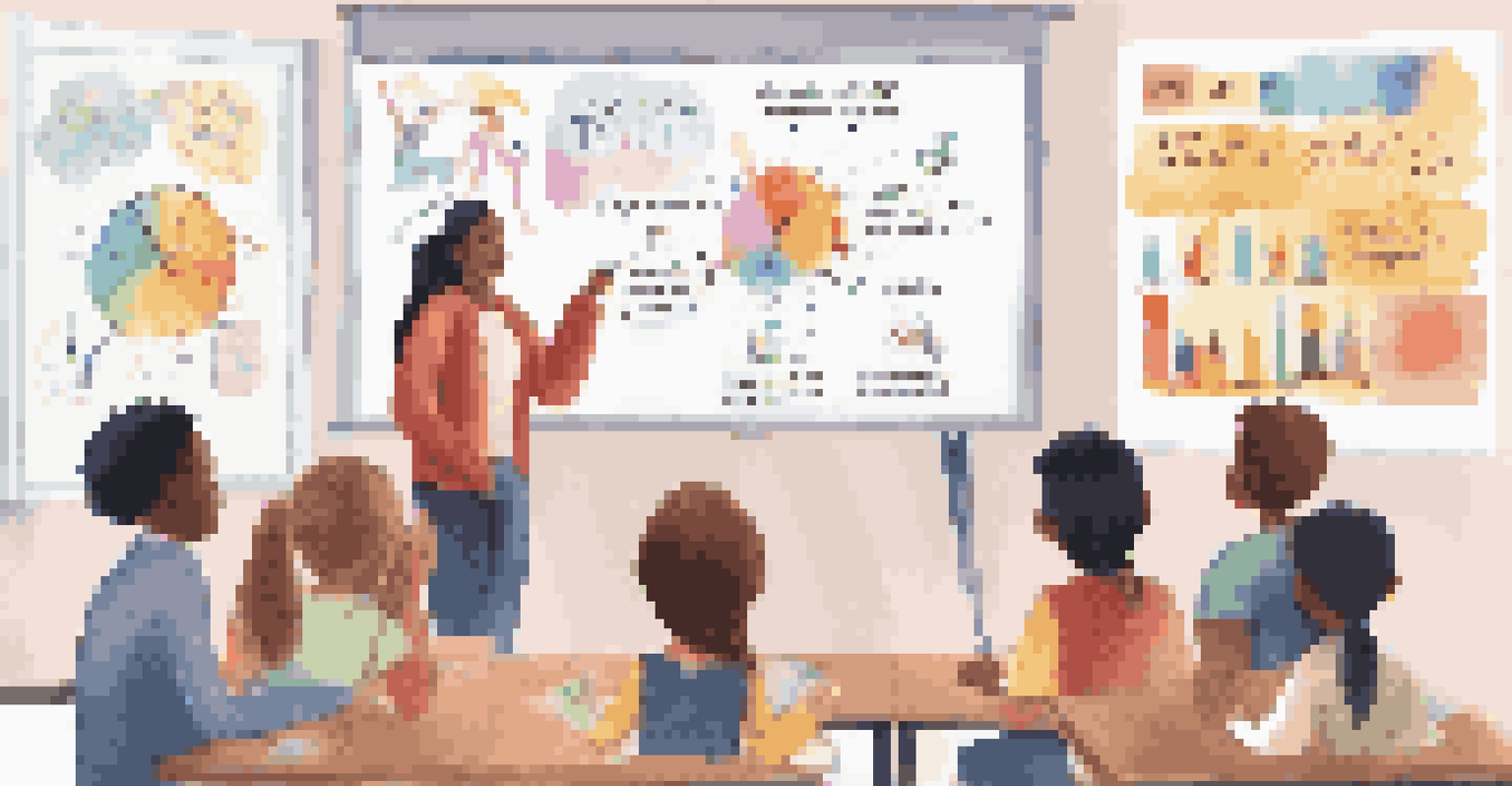Designing for Learner Autonomy: Strategies and Insights

Understanding Learner Autonomy in Education
Learner autonomy refers to the ability of students to take charge of their own learning. This concept empowers learners to make choices about their educational paths, fostering independence and confidence. When students feel ownership over their learning process, they are more likely to engage deeply and pursue knowledge actively.
The greatest gift you can give your children is not your own riches, but allowing them to make their own.
It's important to recognize that learner autonomy isn't just about self-directed learning—it's also about creating an environment where students feel supported in their choices. This means providing them with the tools and resources they need to succeed while encouraging them to set personal goals. Ultimately, an autonomous learner is one who can navigate their educational journey with both guidance and freedom.
Incorporating learner autonomy into educational design can lead to more meaningful learning experiences. By understanding what autonomy means, educators can start to explore strategies that promote this essential skill in their students.
Creating a Supportive Learning Environment
A supportive learning environment is crucial for fostering learner autonomy. This includes not only physical spaces that are conducive to learning but also a psychological atmosphere where students feel safe to express their ideas and take risks. When learners know they are in a supportive environment, they are more likely to explore and challenge themselves.

One way to create this environment is by encouraging collaboration among students. Group activities and discussions can help build a community where learners feel valued and heard. Additionally, providing constructive feedback can guide students while still allowing them to maintain control over their learning.
Empowering Learner Autonomy
Learner autonomy allows students to take charge of their education, fostering independence and confidence.
Ultimately, a supportive environment nurtures autonomy by allowing learners to make mistakes and learn from them. This approach cultivates resilience and encourages students to take initiative in their educational pursuits.
Incorporating Choice in Learning Activities
Choice is a powerful motivator in the learning process. When students have options for how they engage with content, they are more likely to take ownership of their learning. This can be as simple as allowing them to choose topics for projects or select the format of their assessments.
Education is not the filling of a pail, but the lighting of a fire.
By offering choices, educators can cater to diverse learning styles and interests, making the material more relevant to each student. For example, some learners may thrive in hands-on activities, while others might prefer written assignments or digital presentations. Giving students the freedom to choose can lead to increased engagement and motivation.
Moreover, incorporating choice helps students develop decision-making skills that are crucial for lifelong learning. As they navigate their options, learners practice evaluating information and making informed choices, further enhancing their autonomy.
Encouraging Goal Setting and Self-Reflection
Goal setting is an essential component of learner autonomy. By encouraging students to set personal and academic goals, educators help them take ownership of their learning journey. This process involves not only defining what they want to achieve but also creating actionable steps to get there.
Self-reflection plays a key role in this process. When students regularly assess their progress and reflect on their learning experiences, they gain insight into their strengths and areas for improvement. This reflective practice fosters a growth mindset, empowering students to adjust their strategies and persist in the face of challenges.
Supportive Learning Environments
Creating a supportive atmosphere encourages students to explore, collaborate, and learn from their mistakes.
Ultimately, integrating goal setting and self-reflection into the learning process equips students with the skills they need to become self-directed learners. These practices encourage them to remain engaged, motivated, and accountable for their educational outcomes.
Utilizing Technology to Foster Autonomy
In today's digital age, technology can be a powerful ally in promoting learner autonomy. With a plethora of online resources and tools, students can tailor their learning experiences to fit their individual needs. For instance, educational platforms offer interactive content that allows learners to progress at their own pace.
Moreover, technology enables access to a wealth of information, encouraging students to explore topics beyond the traditional curriculum. This exploration can spark curiosity and inspire self-directed learning. For example, learners can watch instructional videos, join online forums, or participate in virtual projects that interest them.
Incorporating technology thoughtfully into the learning environment can enhance student engagement and motivation. By leveraging these tools, educators can support learners in taking charge of their educational journeys, ultimately fostering greater autonomy.
Providing Resources for Independent Learning
Resources are essential for fostering learner autonomy. Educators should compile a variety of materials—books, articles, videos, and online courses—that students can access independently. By offering diverse resources, educators can cater to different learning preferences and encourage self-directed exploration.
It's also beneficial to teach students how to find and evaluate resources themselves. This skill not only aids them in their current studies but also prepares them for future learning endeavors. For instance, workshops on research methods or digital literacy can empower students to seek out information confidently.
Importance of Feedback
Constructive feedback helps students understand their progress and promotes self-awareness in their learning journey.
Ultimately, providing access to a rich array of resources encourages learners to take initiative in their education. When students feel equipped with the tools they need, they are more likely to engage deeply and independently in their learning.
Building a Culture of Feedback and Assessment
Feedback plays a vital role in supporting learner autonomy. Constructive feedback helps students understand their strengths and areas for growth, enabling them to take charge of their learning path. Instead of viewing assessments as punitive, learners should see them as opportunities for reflection and improvement.
Creating a culture of ongoing feedback encourages open communication between educators and students. Regular check-ins and discussions about progress can help learners feel supported while also promoting self-awareness. For example, one-on-one meetings can provide a space for students to express their thoughts and concerns about their learning.

This emphasis on feedback fosters a sense of accountability in learners. They begin to understand that their learning journey is not just about meeting external expectations but about personal growth and achievement, further cultivating their autonomy.